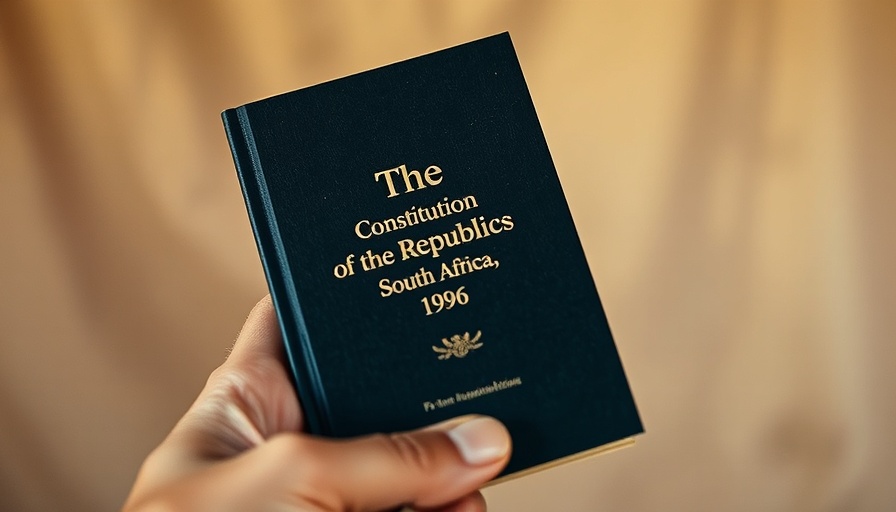
South Africa's Progressive Constitution: A 30-Year Retrospective
As South Africa marks three decades since the end of apartheid, the significance of its Constitution is highlighted by prominent voices advocating for human rights. Professor Thuli Madonsela, the Social Justice Chairperson at Stellenbosch University, emphasizes that despite its challenges, South Africa's Constitution remains a beacon of progress in the global landscape.
Originally adopted in 1996, post-apartheid, the Constitution was groundbreaking in its commitment to civil and political rights, alongside economic and social rights. It represented a pivotal shift from decades of enforced segregation and oppression to a framework that values equality, dignity, and justice for all citizens. Madonsela articulates this sentiment, drawing comparisons between South Africa and other democratic nations, particularly in regards to civil service accountability and citizen participation in governance.
The Human Rights Context: Celebrating Progress Amidst Struggles
The celebration of Human Rights Month in March 2025, themed around “Three Decades of Respect for and Promotion of Human Rights,” raises critical reflections on what has been achieved and what remains to be addressed. While South Africa has made significant strides, challenges persist—issues like poverty, gender-based violence, and income inequality echo throughout communities.
The South African Human Rights Commission plays a vital role in sustaining this progress, charged with promoting and monitoring human rights, even as substantial hurdles to full realization remain. As detailed in the DDP Blog, the nation grapples continually with challenges like xenophobia and access to basic rights, showing that while the Constitution lays a strong foundation, the journey towards equity is ongoing.
Fiscal Responsibility and Social Reform: Balancing Rights with Realities
Madonsela’s recent call to the South African Cabinet to consider easing tax burdens for ordinary citizens points to the intertwined nature of economic policy and human rights. With the Household Affordability Index indicating that more than 57% of earnings are consumed by essential costs like transport and electricity, fiscal policies must adapt to not exacerbate the plight of the poor. Advocates argue that tax reforms should aim to alleviate the financial pressures on marginalized communities, perhaps through mechanisms that prioritize wealth redistribution.
Constitutional Amendments and the Path Ahead
The authors of the Constitution embedded provisions that allowed for future amendments, reflecting a living document that can evolve alongside society’s needs. As South Africa moves toward the possibility of political realignment with the upcoming general elections in 2024 and municipal elections in 2026, considerations around electoral reforms, anti-corruption measures, and executive accountability are critical in shaping governance.
The evolution of public sentiment, especially in response to governmental performance on service delivery, indicates that the electorate desires a responsive and accountable government that aligns with the principles laid out in the Constitution.
Engaging Youth and Building Future Leaders
Central to advancing the ideals of the Constitution is the involvement of youth in political processes. With rising concerns around youth unemployment and systemic barriers, fostering political engagement through education and civic participation is crucial. Initiatives that promote understanding of constitutional rights and responsibilities can equip the younger generation to demand accountability and drive meaningful change.
As South Africa navigates the complexities of its constitutional framework amid ongoing socio-economic challenges, it is vital to remember that the legacy of the Constitution is not solely in its words, but in the actions it inspires among all South Africans. Each citizen has a role in realizing the promise of human rights enshrined within.
As we look to the future, let us continue to engage deeply with these conversations and advocate for reforms that uphold the dignity and rights of every individual. The path toward a just society requires more than recognition; it demands active participation from every sector of society.
Call to Action: Join discussions and initiatives that focus on promoting awareness about human rights and the power of the Constitution in your community. Engage with local civil society organizations and participate in dialogues that push for progressive reforms.
 Add Row
Add Row  Add
Add 




Write A Comment